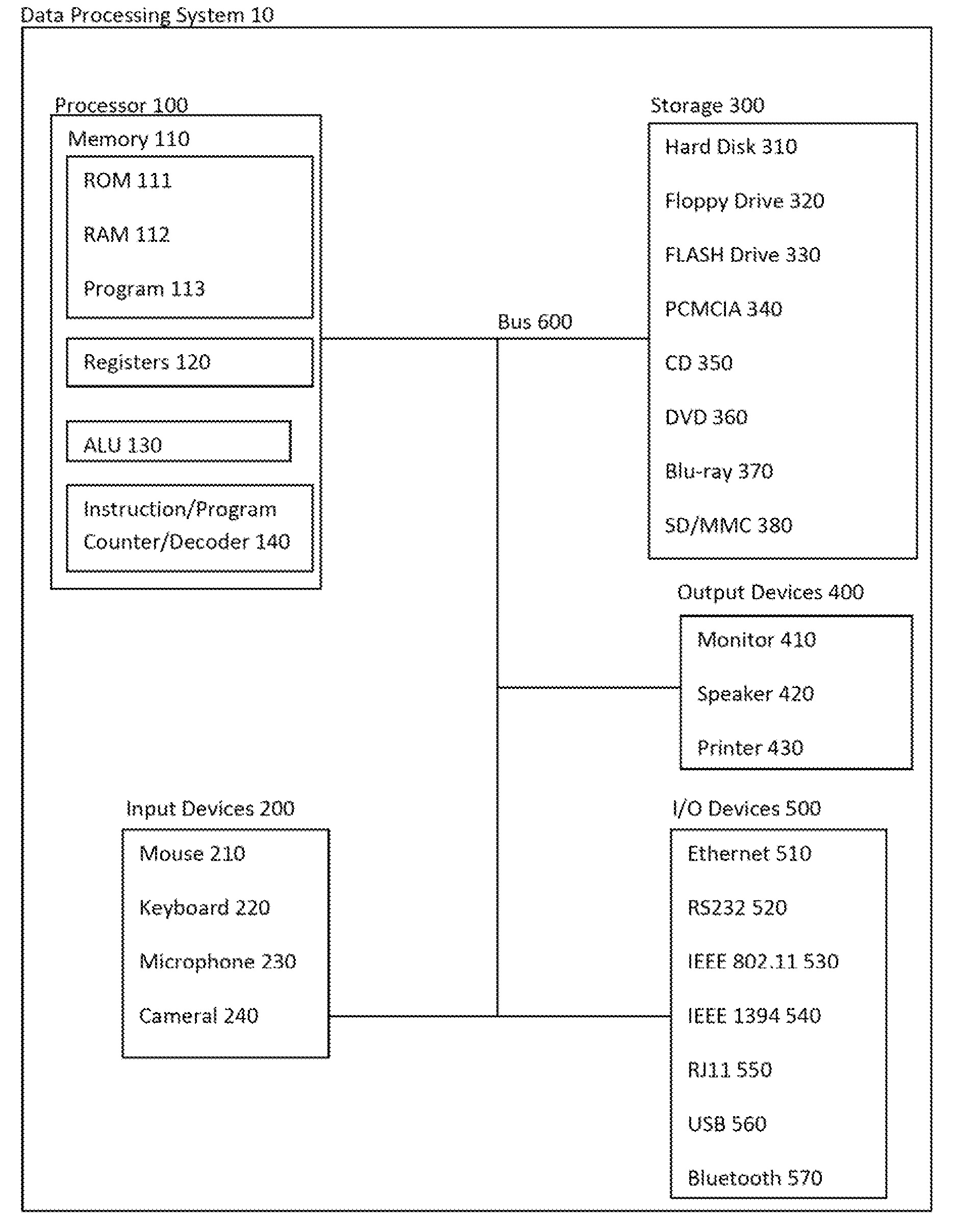Linear Bit Counting Implementations
a technology of linear bit counting and implementation, applied in the field of linear bit counting implementation, can solve the problems of high cost and complexity, shifters, multipliers and parallel circuitry in the prior art may provide little if any benefits in transmission or other applications
- Summary
- Abstract
- Description
- Claims
- Application Information
AI Technical Summary
Benefits of technology
Problems solved by technology
Method used
Image
Examples
embodiment 1
Preferred Embodiment 1
[0035]Counting the ones in a heavily populated value, such as 011:
JavaC / C++public int lbc1_(int val)unsigned int lbc1_uint(unsigned intval){{int bc = 3;unsigned int bc=3;while (val != 0x111) / / loopwhile (val != 0x111) / / loopbeginbegin{{val |= (val + 1);val |= (val + 1);bc−−;bc−−;}}return bc;return bc:}}
FIG. 2 offers a flow chart of lbc1_ / lbc1_uint. After Start 700, the return value bit counter (bc) is initialized to the maximum number of bits to be counted at box 710. Control flow then passes to decision diamond 720, where the program continues to box 730 if any bit in the value being counted is zero; otherwise, the function / routine stops at 750 with the result in the return value bit counter. When control flow passes to box 730, the value being counted is set to the result of ORing it with itself and one greater than itself. Progressing to box 740, the return value bit counter is decremented by one before directing control flow to the beginning of the loop a...
embodiment 2
Preferred Embodiment 2
[0036]Counting the zeros in a sparsely populated value, such as 001:
JavaC / C++public int lbc0_(int val)unsigned int lbc0_uint(unsigned intval){{int bc = 3;unsigned int bc = 3;while (val > 0) / / loop beginwhile (val > 0) / / loop begin{{val &= (val − 1);val &= (val − 1);bc−−;bc−−;}}return bc;return bc;}}
FIG. 3 offers a flow chart of lbc0_ and lbc0_unit. After Start 800, the return value bit counter (bc) is initialized to the maximum number of bits to be counted at box 810. Control flow then passes to decision diamond 820, where the program continues to box 830 if any bits in the value being counted are one; otherwise, the function / routine stops at 850 with the result in the return value bit counter. When control flow passes to box 830, the value being counted is set to the result of ANDing it with itself and one less than itself. Progressing to box 840, the return value bit counter is decremented by one before directing control flow to the beginning of the loop at...
embodiment 3
Preferred Embodiment 3
[0037]Counting the zeros in a heavily populated value, such as 011:
JavaC / C++public int lbc0(int val)unsigned int lbc0uint(unsigned intval){{int bc = 0;unsigned int bc = 0;while (val != 0x111) / / loopwhile (val != 0x111) / / loopbeginbegin{{val |= (val + 1);val |= (val + 1);bc++;bc++;}}return bc;return bc;}}
FIG. 4 offers a flow chart of lbc0 and lbc0uint. After Start 900, the return value bit counter (be) is initialized to zero at box 910. Control flow then passes to decision diamond 920, where the program continues to box 930 if any bit in the value being counted is zero; otherwise, the function / routine stops at 950 with the result in the return value bit counter. When control flow passes to box 930, the value being counted is set to the result of ORing it with itself and one greater than itself. Progressing to box 940, the return value bit counter is incremented by one before directing control flow to the beginning of the loop at decision diamond 920. Starting ...
PUM
 Login to View More
Login to View More Abstract
Description
Claims
Application Information
 Login to View More
Login to View More - R&D
- Intellectual Property
- Life Sciences
- Materials
- Tech Scout
- Unparalleled Data Quality
- Higher Quality Content
- 60% Fewer Hallucinations
Browse by: Latest US Patents, China's latest patents, Technical Efficacy Thesaurus, Application Domain, Technology Topic, Popular Technical Reports.
© 2025 PatSnap. All rights reserved.Legal|Privacy policy|Modern Slavery Act Transparency Statement|Sitemap|About US| Contact US: help@patsnap.com



